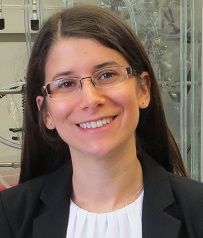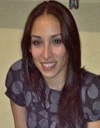Dr. Jean-François Veyan – Lab Manager

After my Ph.D., obtained at the Universidad Tecnica Federico Santa Maria, Valparaiso, Chile, I joined Prof. Y. J. Chabal’s group in 2005, on a post-doctoral position, at Rutgers University, New Jersey. I was in charge of the Hydrogen Storage in Metal Complex Hydrides project, which is now the responsibility of Irinder S. Chopra (Ph. D. Student). I upgraded an Ultra High Vacuum (UHV) system and obtained the critical data for our study on Alane formation on the Al(111) surface. I also developed an experimental setup for the study of Xenon Difluoride interaction with pure compounds and their oxides, for applications in Micro (and Nano) Electro-Mechanicals Systems (MEMS, NEMS). That project has been partially transferred to my colleague Dr. Katy Roodenko. In parallel, I initiated the research on Hydrogen Storage in Metal Organic Frameworks, project transferred to Nour Nijem (Ph. D. Student). I am currently involved in the Atomically Precise Manufacturing Consortium project, studying the Atomic Layer Epitaxy growth of silicon and germanium on Si(100)-(2×1) surface using Disilane and Digermane as precursor gas. On this project, I am supervising Don Dick (PhD student), Gaurav Rao and Perrine Mathieu (undergraduate students).
My challenge, in Prof. Chabal’s group at UT Dallas, is the design and construction of a complex UHV Surface Science facility, to study surface and nanostructure modifications on metals and semiconductors (III-V). This facility combines techniques like Fourier Transform Infra-red Spectroscopy (FT-IR, performed in reflection, internal multiple reflection and transmission geometries), X-ray Photoelectron Spectroscopy (XPS), and Low Energy Ion Scattering (LEIS), connected to a UHV surface science preparation chambers equipped with e-beam evaporators and CVD/ALD capability, in the LN2 to high (1400 K) temperature range. This facility will be interfaced to three Atomic Layer Deposition reactors (ALD), specially designed for in-situ FT-IR, Elipsometry and Residual Gas Analysis (RGA), two UHV chamber for Plasma induced surface modification (one for remote plasma and one for direct plasma), and other UHV systems equipped with Temperature Programmed Desorption (TPD), Auger Electron Spectroscopy (AES), Low Energy Electron Diffraction (LEED), Raman Spectroscopy. Furthermore, I am in charge of the laboratory organization, safety and management. I am involved in most research projects of the group helping my colleagues in building, designing and machining specific parts their experimental setup require.
Sara Rupich

My research interests cover a wide range of areas but focus on nanomaterials and their use in applications to benefit the environment.
I received my Ph.D in Chemistry from the University of Chicago in 2013 under the guidance of Professor Dmitri V. Talapin. At Chicago, I studied the energetics and driving forces behind the self-assembly of nanocrystal superlattices and utilized of nanocrystal self-assembly as a model system for understanding crystal growth and epitaxy. In addition, I synthesized and characterized novel nanomaterials for use in thermoelectric applications.
In the summer of 2013, I moved to Dallas where I joined the group of Professor Yves Chabal in the Materials Science and Engineering department at UT Dallas. Currently, I am working on a collaborative project with the Malko Laboratory in the Physics department to design novel hybrid nanocrystal/silicon heterostructures for use in photovoltaic applications. The hybrid structures utilize non-radiative energy transfer (NRET) where the nanocrystals absorb light and transfer the absorbed energy to the silicon in an analogous manner to FRET (Forster resonance energy transfer). To characterize the interactions between the nanocrystals and silicon, the heterostructures are studied with time resolved photoluminescence spectroscopy. Structural analysis is carried out through scanning electron microscopy, atomic force microscopy, infrared absorption spectroscopy, ellipsometry, x-ray photoelectron spectroscopy, and UV-visible spectroscopy.
Eric C. Mattson

I did my PhD in Physics at the University of Wisconsin-Milwaukee under the supervision of Prof. Carol Hirschmugl and was coadvised by Prof. Marija Gajdardziska-Josifovska. Before joining the Chabal group, I worked on a number of projects ranging from development of synchrotron-based IR microscopy, studying the properties and reactivity of graphene/graphene oxide and MoS2, structural analysis of metal oxide nanoparticles, and imaging of biological cells and materials.
I joined the Chabal group at UT-Dallas in 2014 after 1 year postdoctoral work in Hirschmugl’s lab as a continuation of my PhD work. Since joining the group, I have contributed to the development of an ultrahigh vacuum cluster system for performing in situ Infrared Spectroscopy, X-ray Photoemission Spectroscopy, and Low Energy Ion Scattering Spectroscopy. Primary research interests include UHV-based plasma etching and nitridation of transition metal thin films, monolayer doping of silicon surfaces, and electron beam-induced structural transformations of metal-oxide nanoclusters.
Charith E. Nanayakkara

I received my BS degree in Chemistry from the University of Kelaniya, Sri Lanka. Then I came to Iowa to continue my graduate studies. I received my Ph.D. degree in chemistry from the University of Iowa in 2014 under the supervision of Professor Vicki H. Grassian where I gained a strong interest in surface science, surface reaction mechanisms and material characterization. Then, I joined Prof. Yves J. Chabal’s lab and started working on several projects related to atomic layer deposition (ALD) of metals, metal oxides and metal nitrides, interfacial chemistry of nanolaminate systems (CuO/Al and Cu/Al), and solution based thin film deposition. Studying the growth mechanisms during film deposition and interface formation mechanisms are critical to better understand and control thin film deposition. These studies are carried out using home built ALD tools with in-situ FTIR capability and a home built UHV cluster tool of FTIR, XPS and LEIS.
Dr. Kui Tan

I received my bachelor degree from Nankai University in China in 2008. After that, I came to the United States to continue my doctoral education in materials science and engineering department at UT Dallas. My research interest in Dr. Chabal’s group from 2008 focuses on investigating the small gases molecules (H2O, CO2, CO, NO, NO2, SO2, NH3, NH2CH2CH2NH2 etc) interaction mechanism with metal organic frameworks (MOFs) by using in-situ vibrational (IR and Raman) absorption spectroscopy and vdW-DFT calculation.
In the past 15 years, tremendous advances in MOFs research have been made in the synthesis for new structures, structure determination or post-modification and exploration of new properties for potential high-tech application such as gas storage and separation, sensing and detection, luminescence, drug delivery and catalysis. However, poor understanding of certain fundamental processes (e.g. structural degradation, co-adsorption) is still hindering further rational materials development and accurate assessment of functional performance in practical applications.
My major contributions to field till now includes i) improved the understanding of the degradation mechanism of prototypical MOFs M(bdc)(ted)0.5 and M2(dobdc), also called MOF-74 in humid conditions, ii) established a molecular-level understanding of the interaction of small gases molecules within MOF materials, iii) unveiled the mechanism for competitive co-adsorption in MOFs materials and iv) Invented a new strategy to store gas molecules (e.g. CO2, SO2, C2H4, CO) in MOFs by deposition of a molecular surface barrier layer.
Erika Fuentes-Fernandez

Erika Fuentes-Fernandez is currently a Postdoctoral Research Associate in the Department of Materials Science and Engineering at the University of Texas at Dallas under the direction of Prof. Yves Chabal. She obtained a B.A in Chemistry from the Autonomous University of Coahuila in Mexico in 2008, and her Ph.D. in Materials Science and Engineering from the University of Texas at Dallas in 2013. During her Ph.D., Erika focuses on the synthesis and characterization of piezoelectric materials as well as the device fabrication and testing for harvesting and sensor applications. Her current research is centered on spectroscopy analysis (mainly infrared absorption) to study interactions between MOF and gest molecules for device applications. Her interests include materials and devices for energy related applications such as harvesting, environmental catalysis, gas storage, and gas separation.
Joseph P. Klesko

My academic interests lie within the fields of organometallic chemistry, atomic layer deposition (ALD), and surface science. My research is focused toward the development of new chemistry for the growth of thin film materials pertinent to next-generation microelectronic devices. My doctoral work, completed at Wayne State University under the guidance of Prof. Charles H. Winter, included the development of new precursors and processes for the ALD of transition metal, metal oxide, and metal borate thin films. Significant results included the application of a novel set of bis(trimethylsilyl) six-membered ring systems as strongly-reducing coreagents for the ALD of titanium metal films and the discovery of novel ALD processes for high-purity cobalt and nickel metal films from 1,4-di-tert-butyl-1,3-diazadienyl precursors and formic acid.
Presently, I am a postdoctoral associate under the supervision of Prof. Yves J. Chabal. My research is driven by emerging demands in the microelectronics sector, as specified by our industrial collaborators. Accordingly, I evaluate novel vapor deposition precursors and study the mechanistic details of their surface reactivity using a variety of characterization techniques, including X-ray photoelectron spectroscopy and in situ Fourier transform infrared spectroscopy. I am also working toward the design and synthesis of new reducing coreagents for the selective ALD of metal films and alloys.
